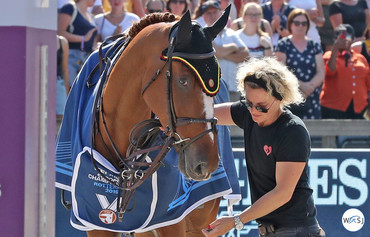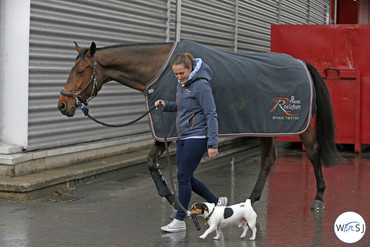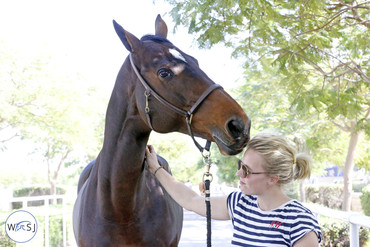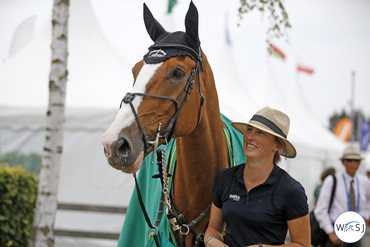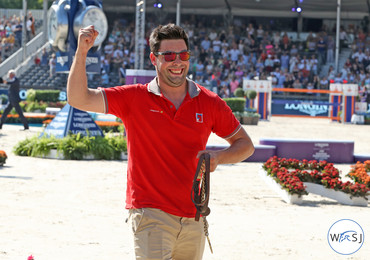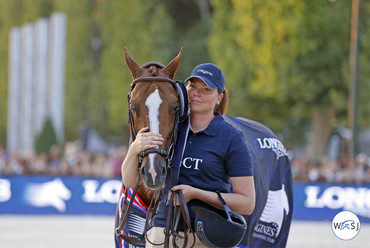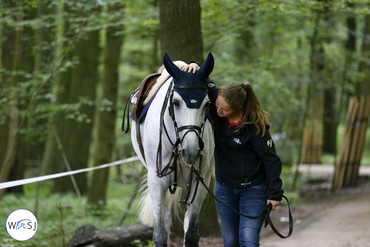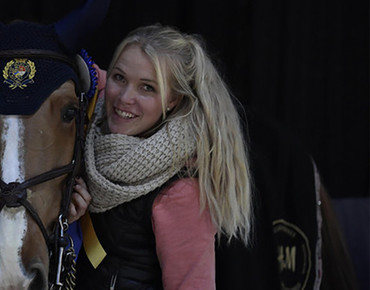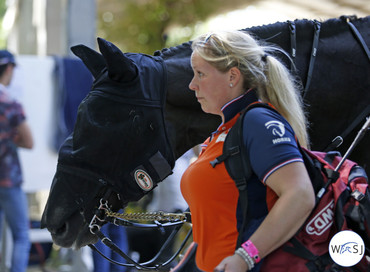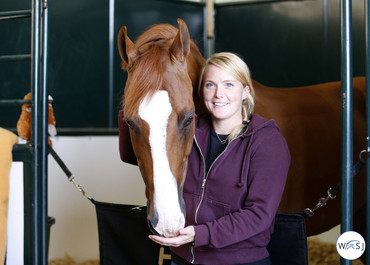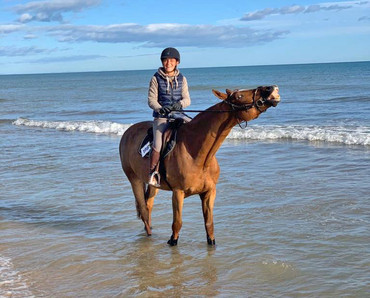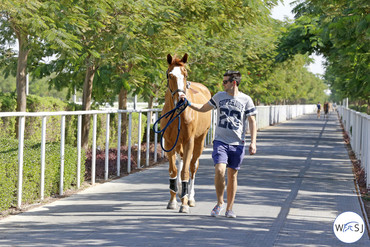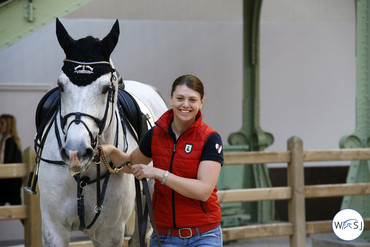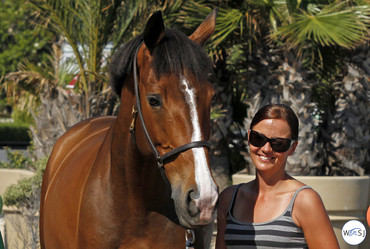World of Showjumping asked several highly experienced grooms to share their best tips & tricks. In this next part of our series, we find out how the grooms keep track of farriers, vaccinations and wormers for a big group of horses.
Jenny Ducoffre, long-time groom for Jos Verlooy:
“It seems we are a small stable, but we do have a large number of horses. We have a big whiteboard with all the horses listed on it. Each horse has the date of its last shoeing written next to its name. Our blacksmith usually gets to us every Monday, so we note all the horses every 4th and 5th week just as a routine – then they still get checked if necessary or not. The board also gives an overview of what the horses are doing every day of the week, and which horses need to be clipped etc. The riders also note down which horses are going to which shows on the board. As a show groom it is a privilege to have a good team at home.”
Morgane Tresch, long-time groom for Jeroen Dubbeldam:
“Anything that has to do with the dentist, the farrier, vaccinations, worming: We write everything down on paper and we also make a plan on the computer. I like to make notes on paper – an overview of each horse with the dates when something was done. For the farrier, we manage with him when he has to come and this also depends on the shows. Sometimes we can call him to do one horse one week early or one week later.
For the vaccinations, we keep an eye on when it is time. This is especially important when you go to a lot of shows. With worming, we make a note, but we always do all horses at the same time and it’s four times a year; like the first week of the month (January, April, July and October). The dentist comes once a year to check all the horses.”
Malin Henlöv, former long-time groom for Peder Fredricson, now working for Evelina Tovek:
“For the farrier we have a whiteboard with all the horses listed, where we write down when they need to be done. The vaccinations are done on settled dates where we try to do all horses at the same time, and at least within the same month. New horses have to go into these routines. We normally give wormers one time in spring and one time in autumn.”
Mel Jobst, long-time groom for Marcus Ehning:
Sean Vard, long-time groom for Martin Fuchs:
Marlen Schannwell, long-time groom for Bertram Allen:
“I made a big whiteboard in the stables with all horses passport details, the last farrier, their next date plus special needs. On the board we also list the vaccinations and wormers. This way, everyone can always see when the next vaccination or shoeing needs to be done. Then we have a free space for whatever needs every horse has such as saddle number, last physio or if the vet orders special medication or treatments."
Aurelie Marchiando, long-time groom for Leopold van Asten:
Josie Eliasson, long-time groom for Jessica Springsteen:
“We don’t have a big amount of horses so it’s easier to keep track of farriers, vet, wormers etc. However, I think the key in every stable – no matter how many horses you have – is to try to keep them on the same schedule as much as possible. They all get vaccinated at the same time, which can be tricky sometimes if one or two horses are at a show, but to try to keep the big group together will help a lot. The same goes for farriers and wormers. Maybe have standing appointments if needed.”
Fran Callan, former long-time groom for Jur Vrieling, now working for Jos Verlooy:
“I’m very lucky to have a great team at home, which runs like a clockwork. The farrier, the vet, wormings, and vaccinations – it’s all organised. We have regular check-ups for the horses with the vet, so then we can report any problems if we find any. If a system works, don’t change it. Having a great team means everyone works together and you know the job will be done properly. We all should work to our strengths and helps each other with our weaknesses.”
Denise Moriarty, long-time groom for Kent Farrington:
Lena Laub, long-time groom:
Sean Lynch, long-time groom for Daniel Deusser:
“We keep control over the blacksmith and the worming on our board in the stable. The dates are written down and then changed when the horses have been at the blacksmith or had their wormer, so we can keep an eye on when it’s needed again. Our vet controls the vaccines – she is in charge of all the passports and paper work, so she will keep an eye on all these things at all times.”
Kay Neatham, former long-time groom for Marcus Ehning:
“I used a calendar on the wall or a diary to keep track of farriers, vets, etc. However, if I was back in the sport now, the new technology with stable management apps and specialized computer programs would be brilliant.
I would have loved to have gotten to try these, with a little reminder in the morning of what’s to do that day. I think it would have made my life so much easier.”
Heidi Mulari, long-time groom for Steve Guerdat:
“Routine! Every year on the same date/month the horses get their vaccines and wormers. When I get a new horse, the first thing I check is the vaccinations. If it looks like the horse is not vaccinated so it can go to a show following our vaccination plan I will get it vaccinated immediately. Farrier visits just have to be written down in a calendar and I usually make a mark for the next visit five weeks later.”
No reproduction without permission, copyright © World of Showjumping.com




